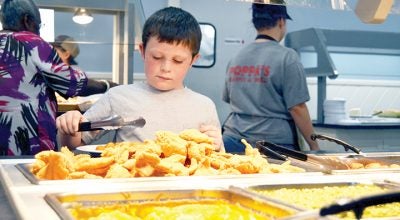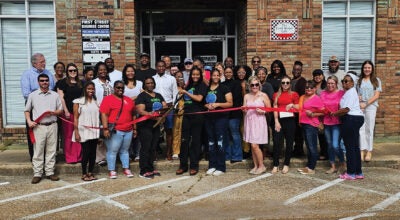Learning teamwork from geese
Published 8:17 pm Saturday, March 26, 2016
There is much that can be learned about teamwork that is applicable to business from studying geese. Following are some facts that we can learn from.
1. A company whose people share a common direction and sense of belonging will get to where they are going much quicker and easier because they are traveling on the strength of the whole group. By flying together, each goose provides additional lift and reduces air resistance for the goose behind. Scientists estimate that the whole flock can fly about 70% farther with the same amount of energy than if the geese flew alone.
Lesson to be learned: People can be uplifted by the energy and enthusiasm of one another resulting in more success in reaching common goals.
2. A leader is important to the success of the team. When a goose drops out of formation it quickly discovers that it requires a great deal more effort and energy to fly. The goose will often quickly return to the formation to take advantage of the lifting power that comes from flying together.
Lesson to be learned: Be open to getting help from those who are ahead of you in order to get to where you want to go. Be willing to learn from others and also provide help to others. Follow your leader by being a team player. You will discover the synergy and energy that comes when you are an active part of a cohesive team effort.
3. It pays to take turns doing the hard tasks and to share in leadership responsibilities. Sharing power is an effective way to mobilize support and get the most out of your people. Geese rotate leadership. When the goose flying in front gets tired due to having expended the most energy it drops out of the front position and moves to the rear. This rotation happens many times during a long journey.
Lesson to be learned: Having various members of the team share leadership responsibilities will provide leadership experience and get the most out of all the members of the team. Serving some time as a leader also makes for better followers.
4. Constant communication among members of the team is exceedingly important in moving effectively toward a common goal. Geese honk at each other. This is believed to be their way of communicating with each other during their long flight. They are providing encouragement to keep up their speed.
Lesson to be learned: When a colleague is doing a good job, the company culture should support and encourage the leader and not be envious. Teams fall apart and fail in accomplishing their goals because of inadequate communications and support. If the culture is one of support for the person who is in the lead, that person will provide support when it is another’s turn in the leadership position.
5. Stand by and help each other in good and bad times. It will pay off in overall employee satisfaction and will boost morale. Geese help each other. When one goose becomes ill, is shot or injured, and drops out of the formation, two other geese will fall out of formation and remain with the weakened goose. They will stay with and protect the goose from predators until it is able to fly again or dies.
Lesson to be learned: Human teams of all kinds, businesses, athletic teams, etc. all work best when they do more than just work together, but also care for the well of being of each other. It may sound idealistic but it pays off by effectively encouraging and motivating employees.
We should all learn from the geese that there is strength in teamwork. Working together does not necessarily mean sinking to the lowest common denominator. It could mean raising everyone’s performance to a higher standard and working in unison toward a common goal. Today’s successful businesses can learn from the geese and demonstrate teamwork in action by applying these principles.
Becky Vaughn-Furlow retired from Trustmark Bank as executive vice-president and human resources director. She can be contacted by emailing bvaughnfurlow@gmail.com.





